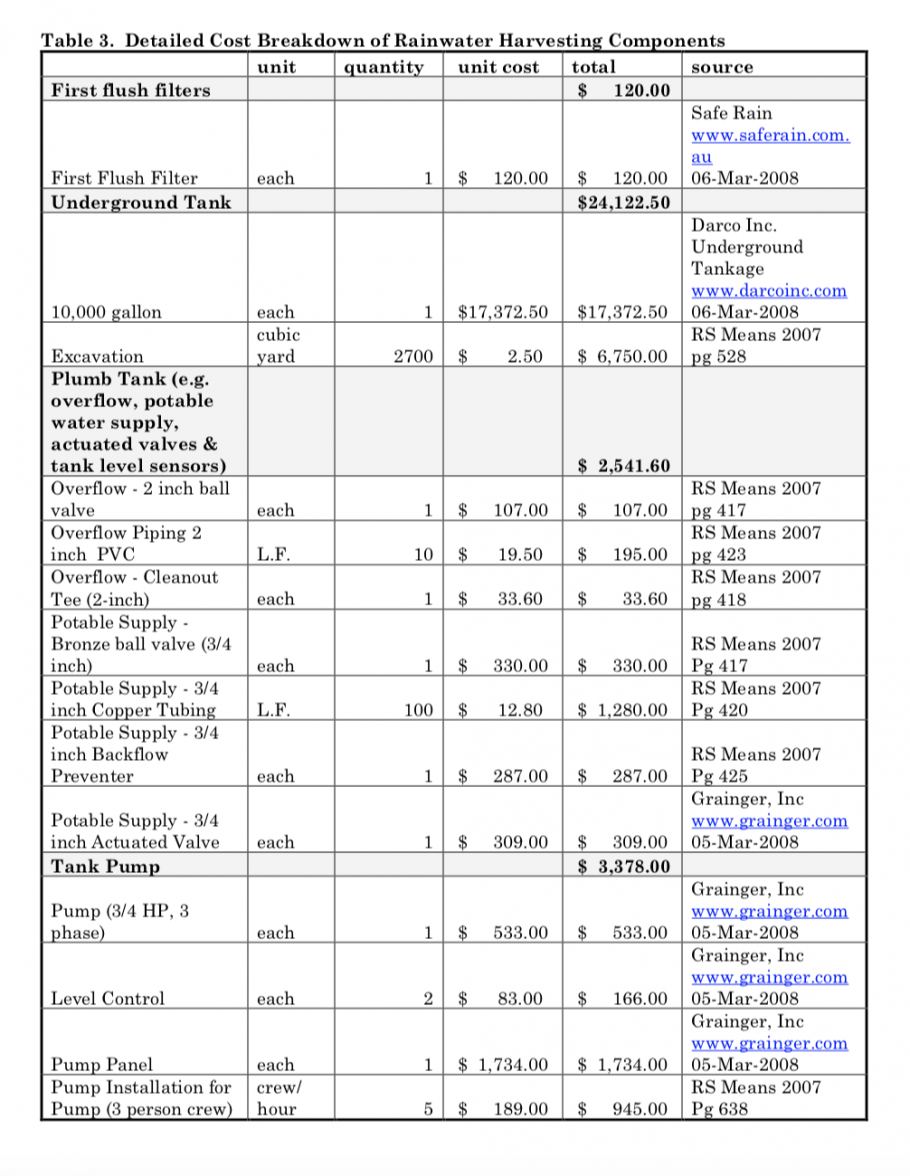The Problem
The dispersion of homes in the Navajo Nation*, paired with a lack of access to good infrastructure, means that a significant portion of the population is located many miles from the closest clean water source. As a result, people spend hours transporting water and must face the costs associated with water hauling, including vehicle cost, storage containers, and gasoline.
* For comparison, the US average population density is about 345 persons per square mile while the Navajo Nation has a population density of 6.33 persons per square mile (Navajo Division of Health and Navajo Epidemiology Center, 2013)
Solution Overview
To help overcome the costs of water transportation, we propose installing rooftop rainwater collection systems and accompanying storage tanks in areas of higher rainfall. Collected rainwater is not necessarily potable, so it is best suited for agricultural and greywater uses. In terms of human consumption, we hope that improving water storage tanks and strategically placing them in locations central to small village communities will reduce transportation time and costs for Diné living in semi-remote areas. Paired with more advanced filtration technologies, this solution has the potential to provide 4,900 gallons of potable drinking water for each home in the Bodaway region of the Navajo Nation per year (see estimated impact, Western Agency section).
Precipitation Levels on the Navajo Nation in July 2017
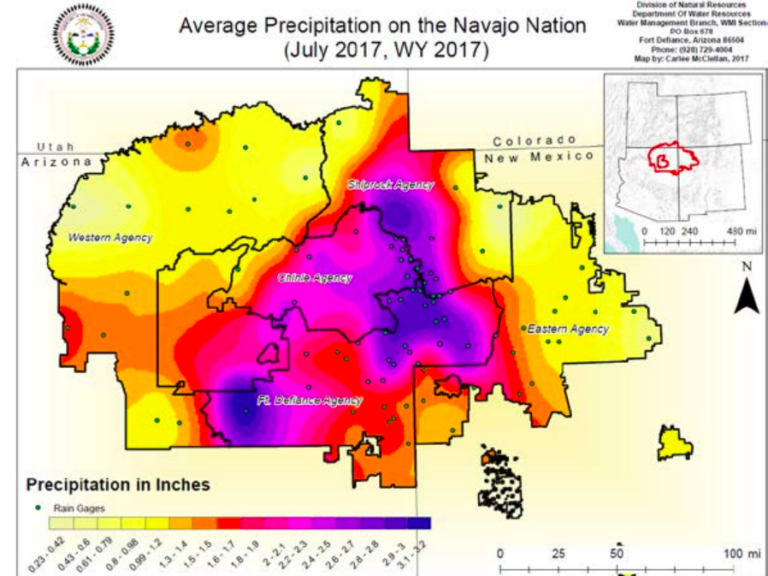
(Department of Water Resources, 2014).
Specifics of Implementation
The rooftop collection system works by utilizing easy-to-install gutter systems to collect water in storage tanks. The system is extremely low maintenance and offers access to water that would have otherwise washed away. In order for the water to be usable, any large contaminants must be removed. Typically, pollutants build up on roofs between rain cycles and then enter the water supply with the rainwater. A common solution to this problem is the first flush approach where the initial surge of rainwater is diverted away from the collection tanks. However, given the already low rainfall in this region (approximately 7.85 inches per year), we propose installing a filter to remove these contaminants without wasting water. These filters also allow the water to be used for a greater variety of uses with a higher quality of water. We would propose using a metal mesh, similar to one that could be purchased at a hardware store, where the gutter connects to collection pipes to enable easy cleaning and access.
Since this solution is not intended to collect drinking quality water, the bare bones filters will cut down on costs. By using clear tanks and/or ones with a transparent strip down the side, people are able to monitor their water level. Additionally, in the rare case when there are torrential downpours, there are notches near the top that allow excess water to flow out, but a lid to prevent water loss as a result of wind evaporation. Using straw-insulated tanks can also protect against stored water freezing in the winter.
Schematic for Rainwater Collection System
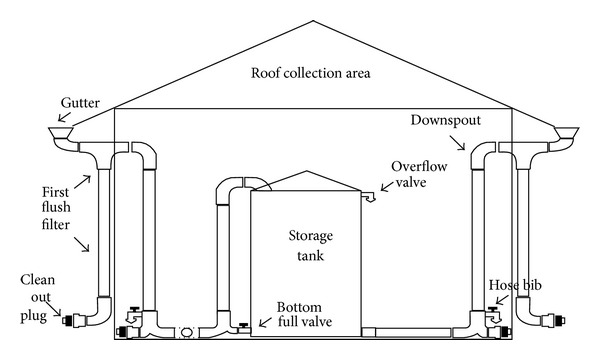
It was difficult to find online data on housing structures, particularly rooftop materials and styles in the Navajo Nation and as far as Diné contacts, we were concerned that this small sample size would not accurately reflect all housing structures. The rooftop rainwater collection system typically works best for gently sloped galvanized steel roofs, but can be adopted to suit other types including traditional Navajo hogans. Thatched and asbestos roofs tend to be the most difficult and require additional treatment (Yurth, 2007).
Rain harvesting has been successful in several other countries including the WASH project in Ghana where systems were set up to collect water at health clinics and near public schools (Andoh, 2018). In fact, some homes across the Navajo Nation already use similar rooftop systems and we believe that making this solution more widespread can contribute to relieving water related issues in the nation (Yurth, 2007).
Images from Rooftop Rain Harvesting System in Kenya
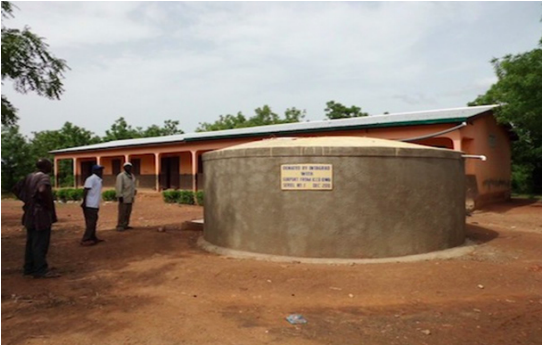
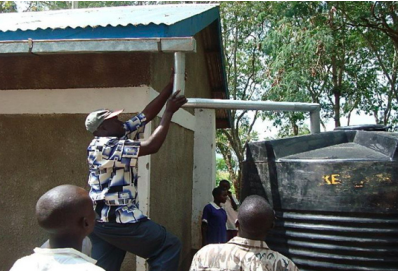
Estimated Impact
To calculate the amount of water that could be collected through rooftop systems per year in a given region we used the following formula:
[Water collected per year in each region (acre-feet)] = (square footage of house footprint) x (average rainfall in inches) x (1 foot / 12 inches) x (7.48 gallons / cubic foot) x (1 acre foot / 325851 gallons) x (number of participating homes)
*Note: acre-feet is the standard measurement for large-scale water collection, especially when it comes to agricultural purposes.
Western Agency: 7.13 acre feet per year, 0.015 acre feet per home, or 4,900 gallons per home per year, roughly 13.5 gallons per day.
* Estimate based on 7.85 inches of average rainfall in the Western Agency, 474 houses in the Bodaway Gap and 1000 square feet for housing footprint.
NOTE: The average domestic water use in the Navajo Nation ranges from 10 gallons per day for water haulers to 100 gallons per day for people in larger communities with running water (Department of Water Resources, 2014). We focused on regions within the Eastern and Western Agencies that largely do not have running water, so the 13.5 gallon figure would represent a significant portion of their daily water intake. If we assume that the average household size is 3.59 persons, then that would mean 3.76 gallons per person per day which could be supplemented by less frequent trips to haul water combined with better storage containers for transported water.
Estimated Implementation Cost
Filter Prices
We recommend using “Rain Harvesting Pty Leaf Eater Advanced Downspout Filter“ which costs $30. This filter is used only to clean leaves from the collected water, and as a result this water is not safe for drinking purposes. We recommend using this filter because it’s both low cost and it has a higher quality compared to other filters of the same kind.
Tank prices
| Size (Gallons) | Price($) |
| 100 | 199.95 |
| 200 | 289.95 |
| 300 | 349.95 |
| 500 | 474.95 |
| 750 | 609.95 |
| 1000 | 1585.95 |
| 3000 | 1499.95 |
| 5000 | 3,899.95 |
| 10000 | 6,799.95 |
With the goal of allowing each person 70-100 gallons of water per day, and considering that on average four people reside in each house we recommend installing the 1000 gallons tank so that when filled to maximum capacity it can be sufficient for two days’ consumption based off of this online calculator.
Pump prices
There are two types of pumps used in rain collection systems: Pressure Tank pumps and Pressure sensitive pumps. Pumps are used to pump the collected rain water into the tank. Comparing between the two types we notice that Pressure Tanks, although cheaper ($370) can only contain systems containing 35 gallons, and since we recommended earlier that the collection tanks are 1000 gallon sized, we can’t use this pump in our system. Consequently, we recommend using Pressure sensitive pump with the cost of $600. The pros of this pump is that it requires little to no maintenance, easy to install, and technologically advanced compared to other pumps (Pushard, 2013).
Total cost
$30 (Filter) + $600 (pump) + $1600 (tank) = $2230 (per home)
These estimates are based off of the simplest possible design of a rainwater collection system. Implementation costs can vary depending on how simple or advanced the design. Various sources cite slightly different cost estimates for implementation, but in general the largest component of the total price is the cost of the tank. Other important components that also contribute to the total implementation cost are the costs of the filters, pumps, and installation.
The table below presents a detailed cost breakdown of a larger scale rainwater collection system designed for implementation in commercial facilities in Arlington County, Virginia (Hicks, 2008). Though the smaller-scale nature of our collection systems means that the following chart’s estimates for “total price” do not correspond with our system designs, the “unit prices” presented by the chart can still be useful.
